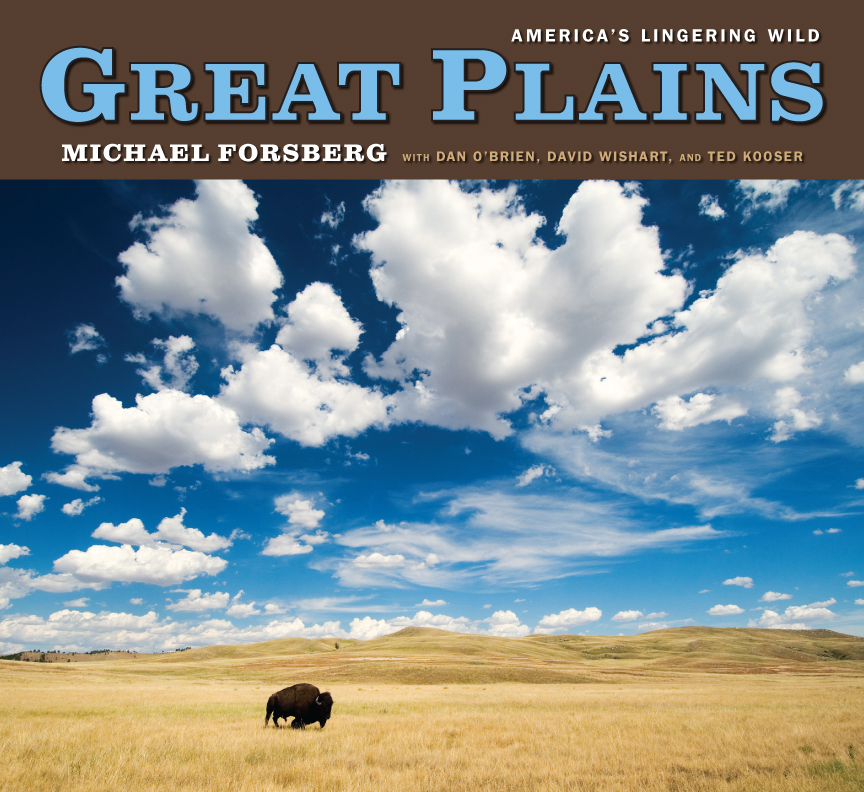The Great Plains you’ve never seen

An article in today’s Omaha World-Herald begins by quoting photographer and author Michael Forsberg as he describes one one his initial experiences with the midwestern landscapes that inspired his newest book, Great Plains: America’s Lingering Wild. The World-Herald‘s David Hendee writes:
Laid out prone in South Dakota’s Badlands, wildlife photographer Michael Forsberg focused on burrowing owls in the prairie dog town far down the prairie.
During weeks spent hunkered in Dakota dirt, Forberg’s aim shifted.
“I was amazed day after day at all the wildlife I saw,” he said. “Not just the amount, but the diversity. Everything from dragon flies to pronghorn and a bunch in between. But I knew that people in cars screaming by off in the distance were looking over this landscape and thinking there wasn’t anything there.”
Forsberg set out to challenge the notion that the Great Plains is a place to drive through or fly over by revealing the region in ways rarely seen or thought about.
And with Great Plains: America’s Lingering Wild Forsberg has accomplished just that. Revealing a midwestern landscape alien even to many of those who live in its midst, Forsberg’s book demonstrates the surprisingly diverse natural communities that still exist on the Great Plains, despite their increasingly endangered status through several centuries of westward expansion and the rise of large scale industrial agricultural practices. Practices which continues to threaten some of the last strongholds of virgin prairie left in the U.S.
More than just pretty pictures, in his new book Forsberg has enlisted the help of former poet laureate Ted Kooser, writer-rancher Dan O’Brien, and geographer David Wishart to provide a foreword and essays complementing his stunning images of some of the last key habitats holding the plains ecosystem, and its arability, together. (For an interesting historical look at the consequences of human mismanagement of the Great Plains see Dorothea Lange’s photographs of some of the first Dust Bowl migrants in Anne Whiston Spirn’s recent book Daring to Look.) As Hendee writes:
Great Plains rivers have run dry. Aquifers have been mined. Wildlife populations have disappeared. Top soil has blown away. And native grassland continues to be turned under by plows.
“This is a working (farming) landscape and always will be,” Forsberg said. “But we have choices to make about whether we want wildlife to have a seat at the table. If we don’t value this natural heritage—and there will continue to be change if we don’t value it—we could lose it altogether.”
Read the full article on the Omaha World-Herald website. Also see a gallery of photographs and sample pages in PDF format (4.2Mb).